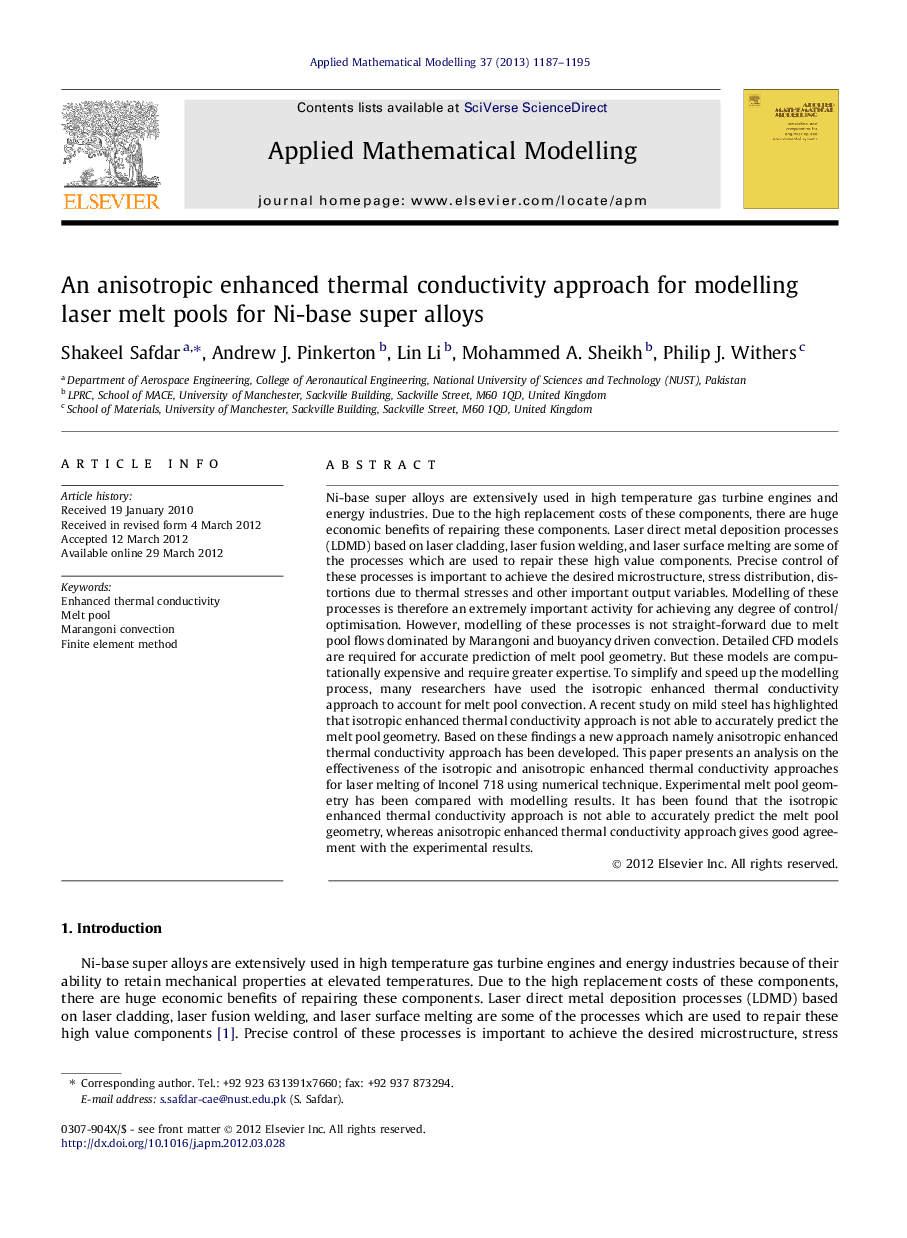| Article ID | Journal | Published Year | Pages | File Type |
|---|---|---|---|---|
| 1705483 | Applied Mathematical Modelling | 2013 | 9 Pages |
Ni-base super alloys are extensively used in high temperature gas turbine engines and energy industries. Due to the high replacement costs of these components, there are huge economic benefits of repairing these components. Laser direct metal deposition processes (LDMD) based on laser cladding, laser fusion welding, and laser surface melting are some of the processes which are used to repair these high value components. Precise control of these processes is important to achieve the desired microstructure, stress distribution, distortions due to thermal stresses and other important output variables. Modelling of these processes is therefore an extremely important activity for achieving any degree of control/optimisation. However, modelling of these processes is not straight-forward due to melt pool flows dominated by Marangoni and buoyancy driven convection. Detailed CFD models are required for accurate prediction of melt pool geometry. But these models are computationally expensive and require greater expertise. To simplify and speed up the modelling process, many researchers have used the isotropic enhanced thermal conductivity approach to account for melt pool convection. A recent study on mild steel has highlighted that isotropic enhanced thermal conductivity approach is not able to accurately predict the melt pool geometry. Based on these findings a new approach namely anisotropic enhanced thermal conductivity approach has been developed. This paper presents an analysis on the effectiveness of the isotropic and anisotropic enhanced thermal conductivity approaches for laser melting of Inconel 718 using numerical technique. Experimental melt pool geometry has been compared with modelling results. It has been found that the isotropic enhanced thermal conductivity approach is not able to accurately predict the melt pool geometry, whereas anisotropic enhanced thermal conductivity approach gives good agreement with the experimental results.
